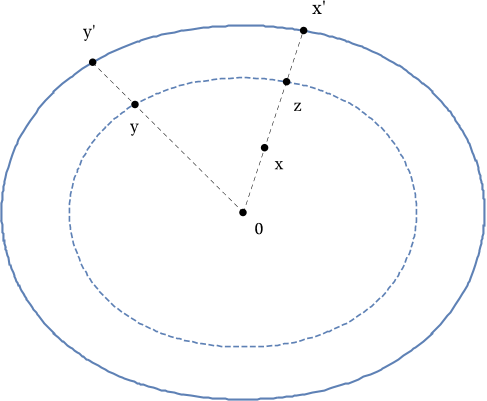




read more





![Figure 4: The construction of the proof of Proposition 6. The continuous curve represent the boundary of K, while the dashed one represent the level set φK ≡ tj(x). The small dots are the points of An(ε). In order to find y(x) one first finds a geodesically closest point z(x) in Zn(ε) to the radial projection x ′ of x onto ∂K. The the index j(x) is determined as one for which tj(x) is a closest point of {tj}j=0,...,mn to φK(x) in the arcosine metric. Finally y(x) is the point in [0, z(x)] such that φK(y(x)) = tj(x).](/figures/figure-4-the-construction-of-the-proof-of-proposition-6-the-ffxidp9k.png)





the authors mention that polynomial meshes are the key ingredient for the approximation algorithms proposed in [24], where the numerical approximation of the main quantities of pluripotential theory (a non linear potential theory in Cd, d > 1) is studied.
Since polynomial meshes have first been introduced in the framework of discrete least squares, their most direct application is in the approximation of functions and data.
Given positive scalars r,M > 0, a compact set K is said to admit a Markov Inequality of exponent r and constant M if, for every n ∈ N , the authors have‖∇p‖K ≤Mnr‖p‖K , ∀p ∈ Pdn , (3)where ‖∇p‖K = maxx∈K ‖∇p(x)‖2, ‖ · ‖2 denoting the euclidean norm of ddimensional vectors.
Polynomial inequalities based on the notion of norming mesh mesh have been recently playing a relevant role in multivariate approximation theory, as well in its computational applications.
The authors recall that a polynomial (norming) mesh of a polynomial determining compact set K ⊂ Rd (i.e., a polynomial vanishing on K vanishes everywhere), is a sequence of finite subsets
Polynomial meshes have been constructed by different analytical and geometrical techniques on various classes of compact sets, such as Markov and subanalytic sets, polytopes, convex and starlike bodies; the authors refer the reader, e.g., to [3, 9, 16, 23, 25, 29] and the references therein, for a comprehensive view of construction methods.
Among their features, the authors recall for example that the property of being a polynomial mesh is stable under invertible affine transformations and small perturbations (see [13, 25]).
The advantage of using the Dubiner distance is that the mesh constant becomes 1/ cos(θ(ε)), which ensures an error ε (relative to the polynomial range) in mesh-based polynomial optimization by O(n2/ε) samples (notice also that for d = 2 using the general approach of Proposition 3 the authors would use O(n4/ε2) samples).
In this section the authors modify and improve the construction on smooth convex bodies, by tangential Markov inequalities and estimates of the Dubiner distance, obtaining nonuniform norming meshes of much lower cardinality.
It has about 19000 points, whereas the Dubiner-like (i.e., constructed by Proposition 6) mesh An( ), n = 4 and ε = 0.2, consists of about 1100 points.
If the authors move to the case ε = 0.01 keeping n fixed, the grid-based mesh of Proposition 3 has more than 5 millions points, whereas the Dubiner-like one about 23000.
The latter has been obtained by a Matlab code for polynomial mesh generation on smooth 2-dimensional convex bodies, that computes numerically the boundary curve length and curvature (the rolling ball radius ρ is the reciprocal of the maximal curvature), and then uses an approximate arclength parametrization to compute a geodesic grid with the required density; the code is available at [13].
The authors can then search, in the equivalence class of convex bodies generated from K by invertible affine transformations, a representative K ′ with bounded aspect ratio diam(K ′)/w(K ′).
Note that this algorithm can be generalized to higher dimension d > 2, however this requires to solve O((n2/ )d−1) non linear equations as n2/ → ∞.
Note that, using the Minkowski functional, one can define the radial projection onto ∂K by settingx′ := xφK(x) ∈ ∂K, ∀x ∈ Rd. (32)Proposition 5. Let K ⊂